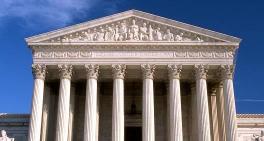Recent Updates
-
U.S. District Courts II
United States Courts 05/30/2017New York Eastern - ECF New York Northern - ECF New York Southern - ECF New York Western - ECF North Carolina Eastern - ECF North Carolina Middle - ECF North Carolina Western - ECF North Dakota - ECF Northern Mariana Islands - ECF Ohio Northern - ECF ...
-
U.S. District Courts I
United States Courts 05/30/2017Alabama Middle - ECF Alabama Northern - ECF Alabama Southern - ECF Alaska - ECF Arizona - ECF Arkansas Eastern - ECF Arkansas Western - ECF California Central - ECF &n...
-
U.S. Bankruptcy Courts VI
United States Courts 04/30/2017All bankruptcy cases are handled in federal courts under rules outlined in the U.S. Bankruptcy Code.There are different types of bankruptcies, which are usually referred to by their chapter in the U.S. Bankruptcy Code.Individuals may file Chapter 7 o...
-
U.S. Bankruptcy Courts V
United States Courts 04/30/2017Bankruptcy is not the only legal status that an insolvent person may have, and the term bankruptcy is therefore not a synonym for insolvency. In some countries, such as the United Kingdom, bankruptcy is limited to individuals, and other forms of inso...
-
U.S. Bankruptcy Courts IV
United States Courts 04/30/2017Bankruptcy courts appoint a trustee to represent the interests of the creditors and administer the cases. The U.S. Trustee[3] appoints Chapter 7 trustees for a renewable period of 1 year, Chapter 13 trustees are “standing trustees” who ad...
-
U.S. Bankruptcy Courts III
United States Courts 04/30/2017United States bankruptcy courts are courts created under Article I of the United States Constitution.[1] The current system of bankruptcy courts was created by United States Congress in 1978, effective April 1, 1984.[2] United States bankruptcy court...
-
U.S. Bankruptcy Courts II
United States Courts 04/30/2017Filing bankruptcy can help a person by discarding debt or making a plan to repay debts. A bankruptcy case normally begins when the debtor files a petition with the bankruptcy court. A petition may be filed by an individual, by spouses together, or by...
-
U.S. Bankruptcy Courts I
United States Courts 04/30/2017Bankruptcy helps people who can no longer pay their debts get a fresh start by liquidating assets to pay their debts or by creating a repayment plan. Bankruptcy laws also protect financially troubled businesses. This section explains the bankruptcy p...








